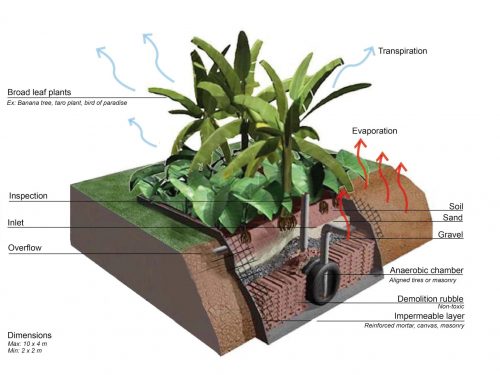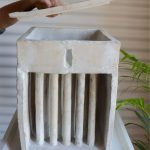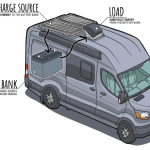“Flush and forget” or “drop and store” are some of the most common strategies for human waste “treatment” around the globe. These approaches can be seen in massive sewer systems that exhaust effluence away from communities, septic systems that hide and diffuse material locally, and common pit latrines that simply hide and cover the waste. These methods do not treat the waste so much as bury it or move it to another place in the world where it may become someone else’s problem. In doing so, households and communities are missing an incredible opportunity to turn waste into nutrients that can improve public health and reduce hunger.
EcoSanitation is a closed-loop concept of sewage treatment that employs the planet’s natural hydrological cycle to close the gap between sanitation and agriculture. The hydrological cycle, a term we use to illustrate the paths of water between atmosphere, earth and oceans, includes the essential process of evapotranspiration. Evapotranspiration is the sum of water transfer to the atmosphere due to evaporation (from soil) and transpiration (from the metabolic processes of plants). This naturally occurring phenomenon, which separates water vapor from organic material, can be harnessed to safely process the nutrients of human waste while supporting the growth of edible fruits and vegetables.
Read more: EcoSanitation: Trading “Flush and Forget” for “Cycle and Sow” @ Engineering for Change.






